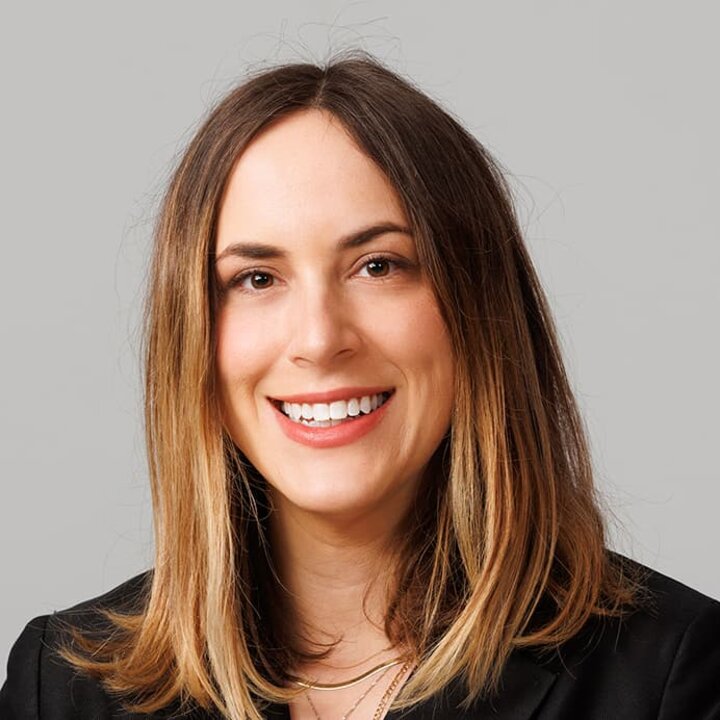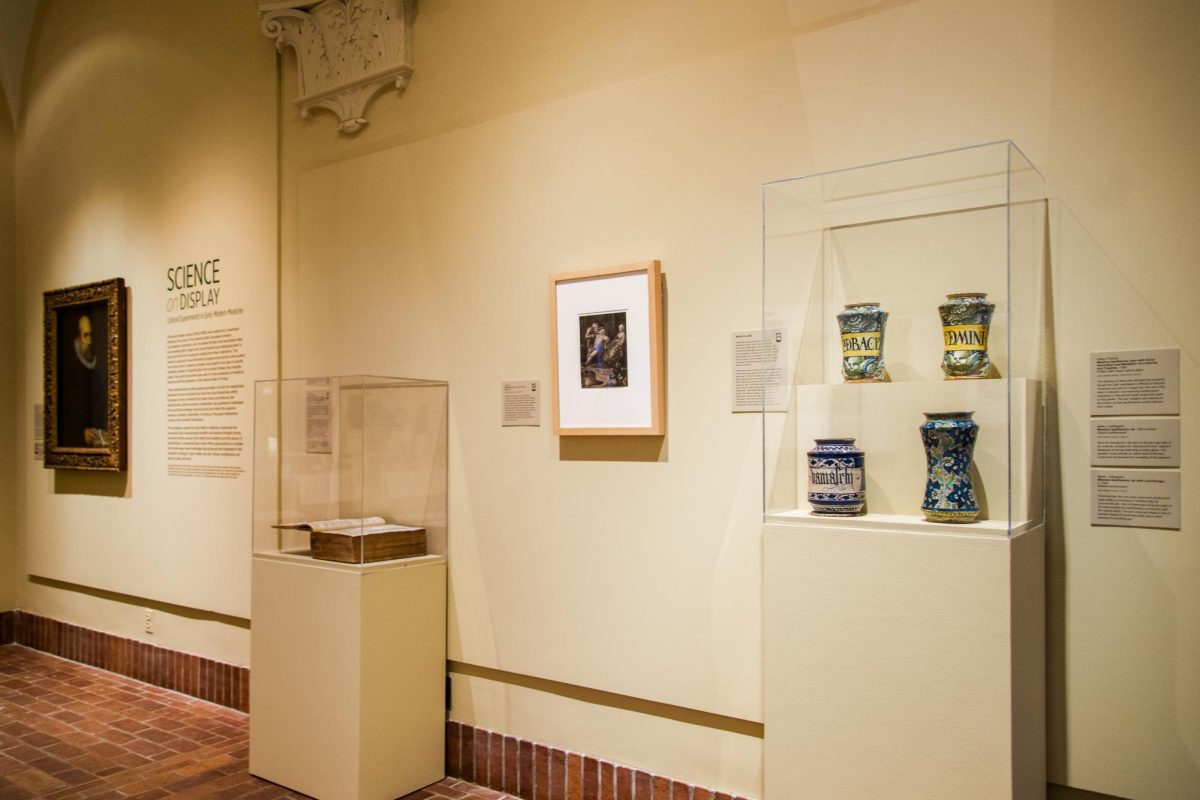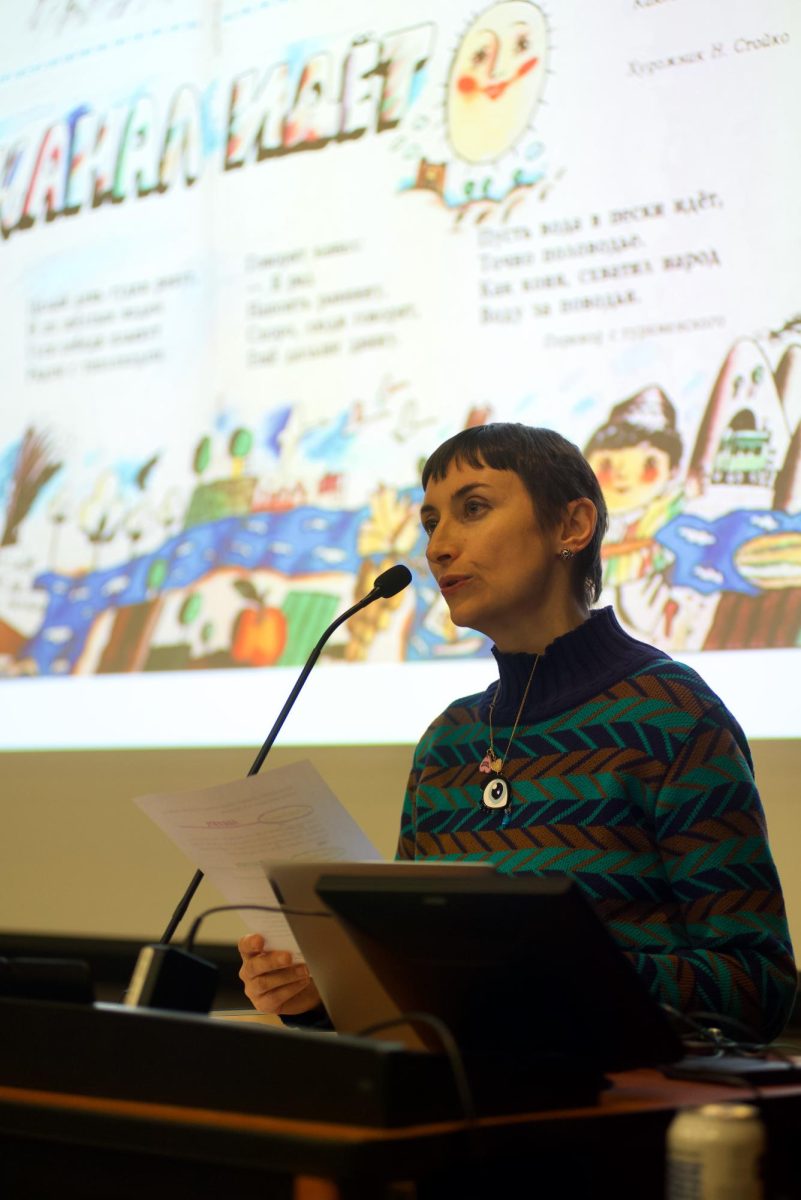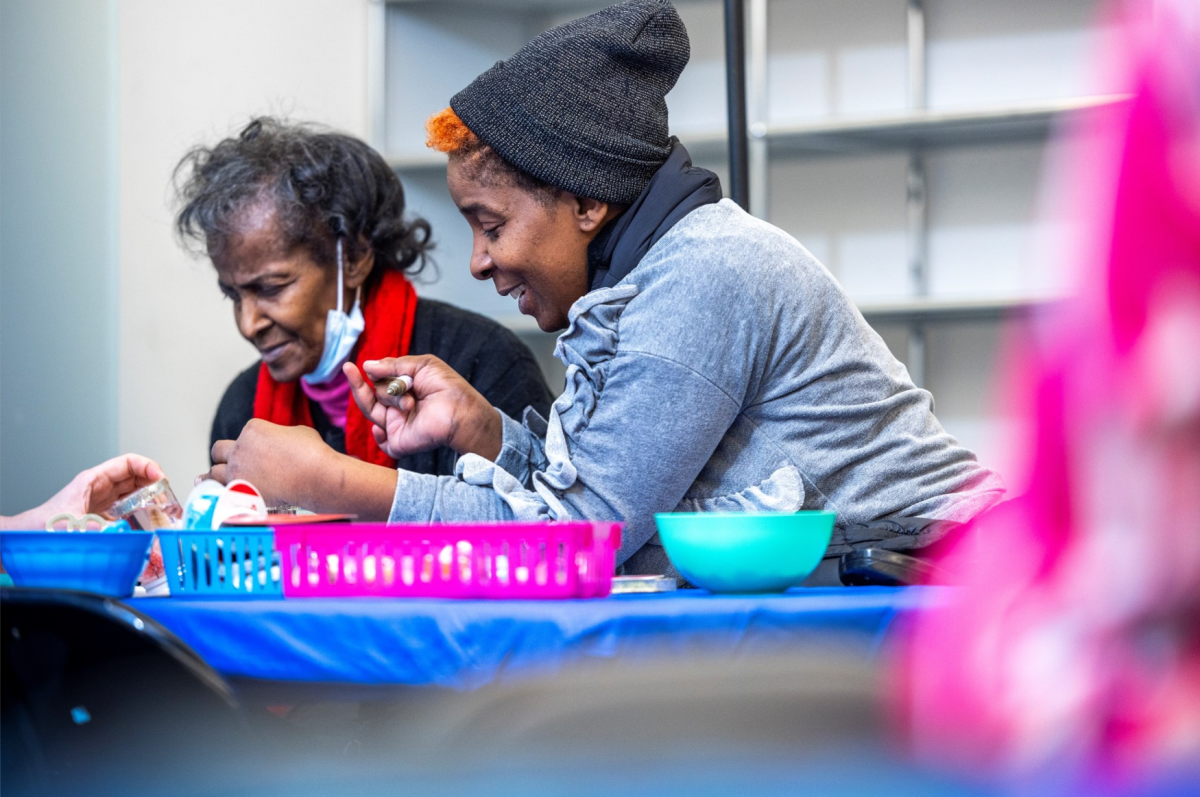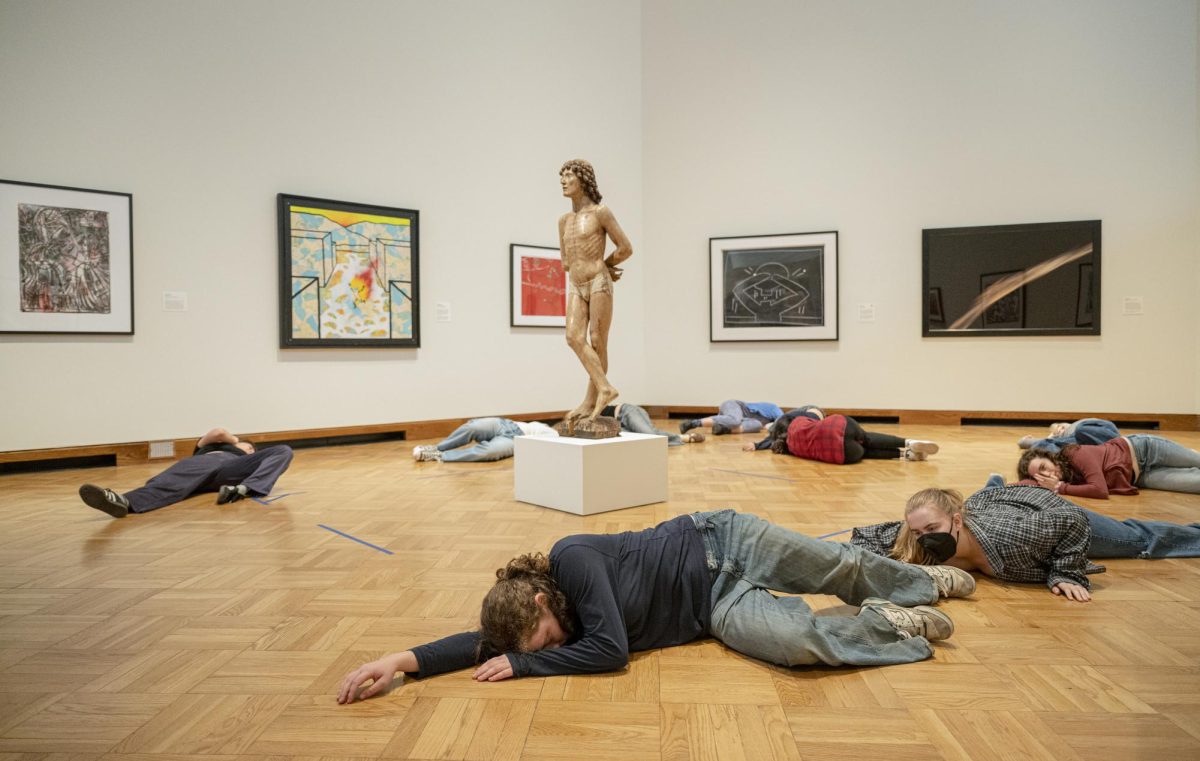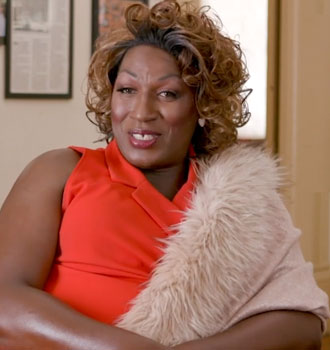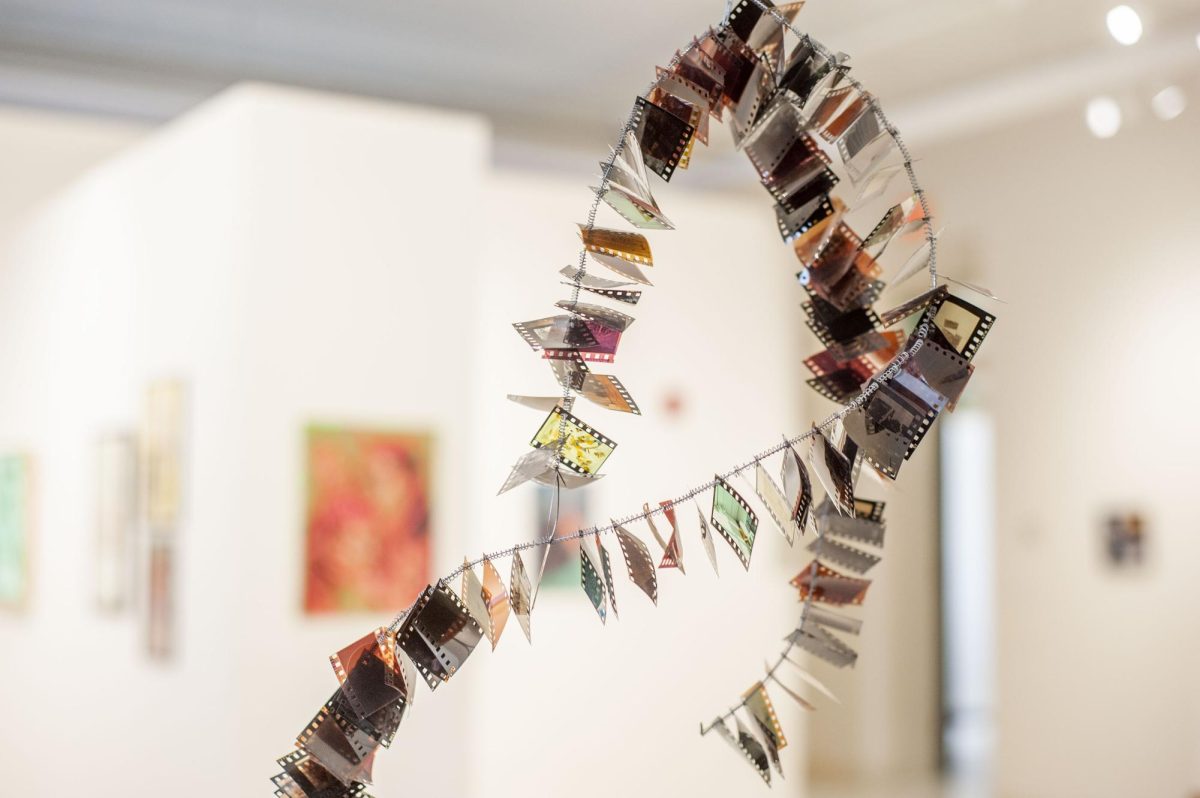On Feb. 12, Assistant Professor of Printmaking at the University of Nebraska-Lincoln Sophie Isaak presented an art lecture in the Clarence Ward ’37 Art Building. She described her trajectory from a university student to her profession as a printmaker and professor today.
Isaak entered the University of Vermont to complete an English degree. However, after her mentor inspired her love for printmaking, Isaak added a Studio Art major to her degree. At UVM, Isaak learned that artwork is about starting a piece and then finding answers through the process. To this day, Isaak returns to this lesson again and again.
After obtaining her degree, Isaak attended the University of Iowa and received a master’s degree in printmaking with a secondary concentration in painting. Isaak was initially shocked by Iowa’s flat landscape and cultural differences, but soon found the environment very generative for her work. She started to explore the idea of oppositional forms in her art, such as color versus monochrome or organic versus geometric shapes. She fascinated herself with questions of how one medium could replicate another. How could an etching not look like an etching? And how could an ink drawing look like an etching?
“It can be jarring to live with a lot of tragedy and horrible things happening in the world, and then juxtaposed with that are moments of levity and humor in your daily life,” she said. “It helps me to speak to the absurdity of just how we’re constantly bombarded with things that don’t make sense when they’re next to each other.”
Third-year College student Audie Wilson attended the lecture and commented on Isaak’s progression as an artist.
“Isaak’s work is really inspiring because she has honed her skills in abstraction and you could see that from the progression of her work,” Wilson said. “She’s also been really fun to work with. I’ve helped with some of the printing that they’ve been doing.”
Isaak’s work is colorful and often surprising. College second-year Frances Freais attended the lecture, interested in Isaak’s work after having interned at a printmaking press over the summer and during Winter Term.
“I found the mix and the contrast of all these different colors and patterns to be an emotionally evocative thing to look at,” Freais said. “There’s different ways of making prints, but sometimes there’s a tendency to reduce the amount of visual clutter that’s going on. But she maximizes that in this way of questioning what all these different shapes and patterns and colors can do when they’re put together.”
Isaak takes inspiration from artist Joanne Greenbaum’s philosophies on art. She shared a quote from a BOMB interview with Greenbaum in 2013.
“Originality is so fraught with worry, you know,” Greenbaum said. “But I feel that if I work a certain way, coming from myself, I will be original. Instinct, a dirty word for women to use pertaining to their work, is undervalued as a source for big ideas.”
Isaak highly values this sentiment. Throughout the lecture, she emphasized the importance of trusting yourself and your instincts. She mentioned some of her sources of inspiration, starting with Jonathan Lasker, one of her favorite artists. Inspired by Lasker, Isaak created a piece that was not so well-received. However, she returned to the idea and created more work. From this experience, she shared the advice to continue finetuning an idea, even if it isn’t so successful the first time.
Humor is vital to Isaak’s work and life. This is reflected in many of her works’ titles, some of which include, “Instead of learning math, you’re learning slut-shaming,” “Just because you can doesn’t mean you should,” and “Jello Snotz.” Isaak explained that she generally titles a piece after she creates it. She keeps a list of quotes and phrases on her phone that interest her, and these citations often inspire her titles.
Wilson remarked on Isaak’s creativity.
“The idea that she likes to decorate and accessorize her pieces in the gallery spaces was really exciting to me,” Wilson said. “She’s looking at what traditions are doing to the visual elements of her work, and she’s elevating them and accessorizing to her needs.”
Isaak introduced Barbara Rossi, another artist she admires. Isaak appreciates Rossi’s “magic drawings,” in which Rossi started artwork from the center and drew from there. She never planned what would come out from the center, hence the “magic” of the drawing. Isaak uses a similar technique, often starting from one shape and no other plan. It took Isaak a while to learn to work without a plan, but after much perseverance, she learned to set parameters and work within those limits. With printmaking, it’s essential to figure out your freedoms and work within them.
“One of the things that stuck with me was the process that Sophie was using of figuring out what you’re making just by starting to make something,” Freais said. “Sometimes I can get a little bit stuck on what I want to be making, but I think that that was such a clear way of solving that issue.”
Isaak reflected on her artwork.
“There’s still parts of my prints that I don’t love, but you can’t know how it’s gonna look until you do something,” she said. “You just have to go for it, even if it feels wrong.”


